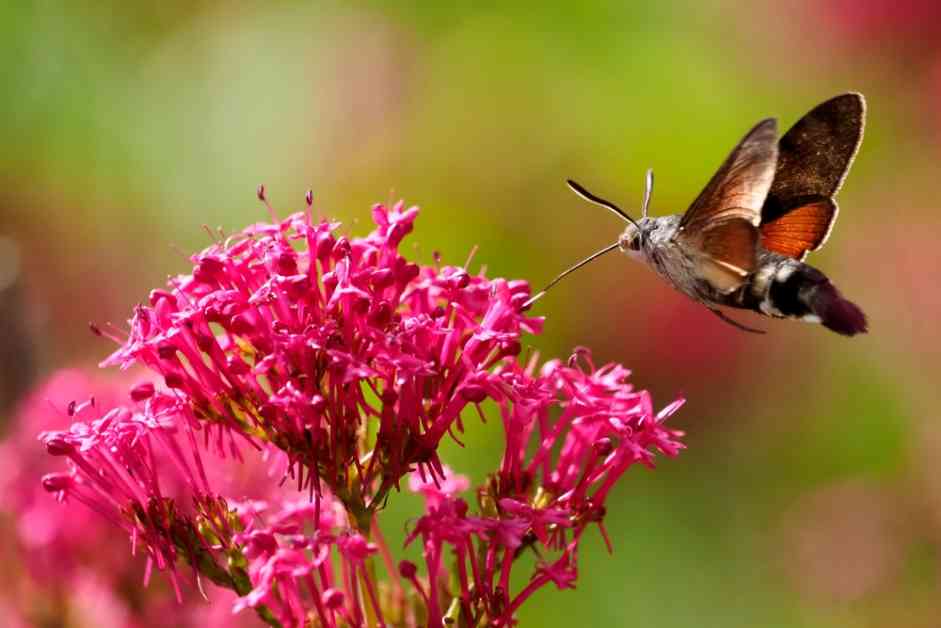Hummingbird moths are fascinating creatures that often mimic the appearance and behavior of hummingbirds. These insects belong to the Sphingidae family and are known for their heavy bodies, long wings, and agile flying abilities. They can hover like hummingbirds while feeding on nectar from flowers without landing, and some species can even fly backward or dart to the side.
The appearance of hummingbird moths is quite striking, with a furry body similar to a bumblebee and long, powerful wings. Their wingspan can vary from 2 to 6 inches, depending on the species. Each species of hummingbird moth has its own unique appearance, with features such as transparent wings bordered with dark scales or colorful coats with pinkish underwings.
While some species of hummingbird moths are more common, others are less frequently observed due to specific habitat requirements. Spotting a hummingbird moth can feel like a special event, especially during the warmer summer months when they are most active. Despite their intimidating size and rapid movements, hummingbird moths are harmless to humans as they lack stingers and biting mouthparts.
The lifespan of a hummingbird moth varies depending on the species, with some living up to seven months while others only live for a few weeks. Their life cycle includes stages such as egg, larva, pupa, and adult. As pollinators, adult hummingbird moths play a crucial role in ecosystems by feeding on long-throated flowers that other insects may not access, contributing to the reproductive success of many flowering plants.
While they may be considered pests as caterpillars, adult hummingbird moths are important contributors to the food web as their presence provides food for predators like birds and bats. Their ability to hover and feed on a variety of flowers makes them vital for pollination and the health of ecosystems. Observing hummingbird moths in gardens and natural areas can help us appreciate the diversity of insects and their role in maintaining a healthy environment.

